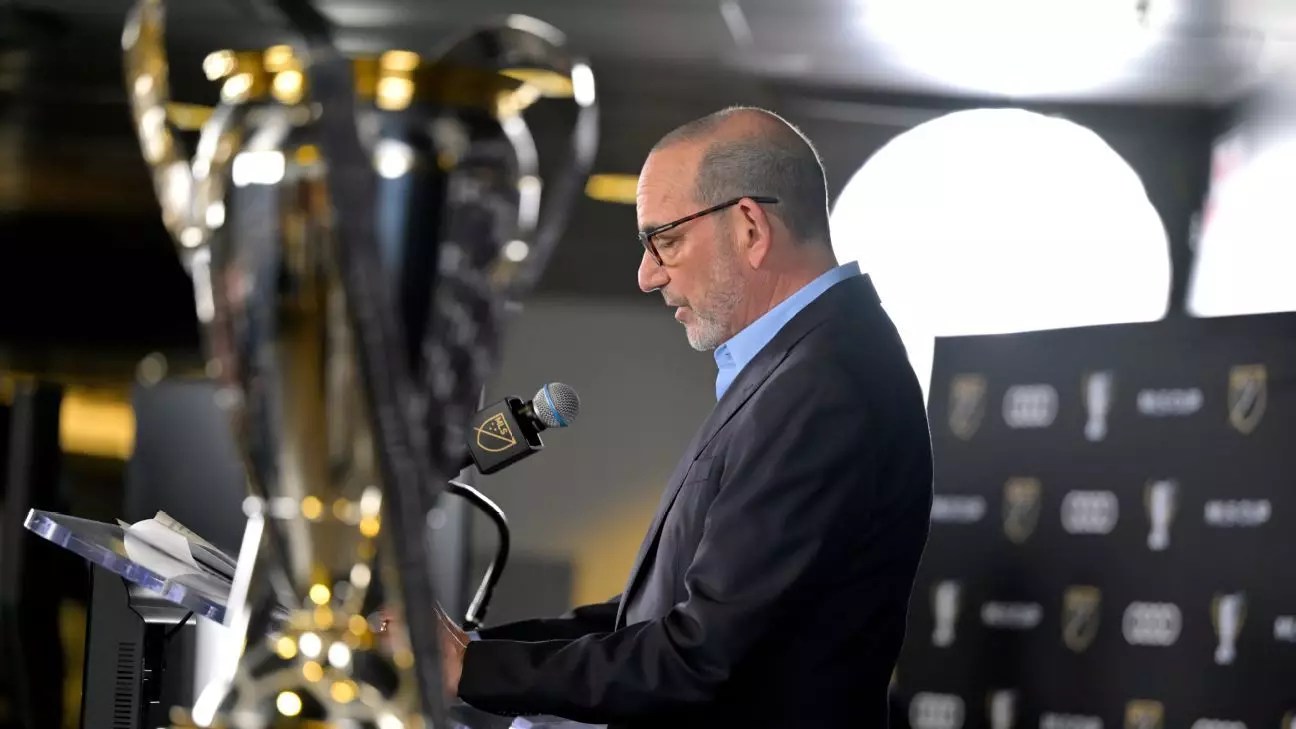As Major League Soccer (MLS) continues to navigate a complex landscape of competitive commitments, league officials are increasingly recognizing the urgency of adapting to an evolving sporting environment. At the annual State of the League address, MLS Commissioner Don Garber articulated the challenges of a congested calendar while hinting at a potential shift to align the league’s structure with international norms, primarily the European schedule. Historically, the MLS has operated on a February to December timeline, which, in light of international commitments and domestic tournaments, is proving to be increasingly difficult to maintain without significant complications.
The concept of altering the league’s calendar is not new; earlier attempts were made in the 2004-05 and 2014-15 seasons without success. However, Garber suggests that this time around, there is a notable rise in consideration for such a realignment. This increase in momentum seems tied to the heightened stakes of various international tournaments and the growing complexity of the MLS’s own scheduling requirements. “There’s still a lot of work to be done,” Garber stated, stressing the need for consensus among stakeholders, but the fact that this idea is being revisited may indicate that the league is at a pivotal moment.
The combination of the United States hosting the FIFA World Cup in 2026 and the ongoing agitation of concurrent tournaments further complicates the league’s scheduling. Traditionally filled with competitive fire, June has transformed into a month dominated by international events, squeezing already limited windows for league matches. This dual pressure point demonstrates a substantial need for reevaluation; the league must strive for balance amid expanding commitments that could dilute the competitive spirit of the domestic league.
The current structure of domestic tournaments, particularly the Leagues Cup, U.S. Open Cup, and Club World Cup, has placed additional strain on the MLS schedule. As Garber pointed out, the league’s landscape has become so cluttered that it is no longer feasible for all teams to compete across all tournaments in a single season. Instead, adjustments must be made to ensure that more teams participate in at least one tournament, thus offering pathways for silverware. The success of such tournaments not only elevates individual clubs but also reinforces fan engagement across the board.
For instance, in 2024, only eight teams participated in the U.S. Open Cup, a stark contrast to the potential breadth of participation that could resonate deeply with supporters. Garber emphasized the intrinsic value of domestic tournaments, noting, “We want teams to have opportunities to lift trophies.” This outlook underscores the need for a recalibrated approach to scheduling where clubs can realistically vie for championships without overwhelming their players or their support systems.
Garber also touched upon the evolution of MLS’s media strategy, particularly the multi-faceted partnership with Apple TV. While he refrained from quoting specific viewership statistics, he expressed a degree of satisfaction with the growth in viewership. The current structure promotes what he describes as “destination viewership,” allowing for a more controlled environment with dedicated fan engagement. However, balancing the viewership metrics throughout various games remains crucial.
The difficulty lies in determining an effective measurement for success. With numerous matches happening concurrently, particularly on Saturday nights, reaching an acceptance on how to compare viewership remains an ongoing challenge. Yet, Garber remains optimistic. He expects that as the industry further develops, clearer metrics will emerge, allowing more strategic planning for future engagements.
Despite the budget constraints and the quest for greater competitiveness, Garber foresaw no significant changes in roster spending in the immediate future. He acknowledged the disparity in financial muscle compared to other leagues but assured that the MLS is committed to creating avenues that allow clubs to maximize their potential. The league’s approach toward player investment reflects a broader strategy that takes into account both financial prudence and competitive integrity.
Moreover, while MLS teams Miami and Seattle are positioned in the lower tier in terms of player transfer values, efforts continue to generate innovative models that could facilitate greater competitiveness. In this regard, the ongoing collective bargaining agreement discussions signal a proactive stance toward evolving labor relations in the sport, focusing on creating a sustainable framework for player investment without compromising financial health.
The MLS under Garber’s leadership is approaching a significant crossroads. By identifying and navigating the intertwined complexities of scheduling, global commitments, and financial viability, the league is poised for transformative changes. Embracing adaptiveness in operations will ultimately determine its trajectory and influence in the increasingly competitive landscape of global sports.


Leave a Reply